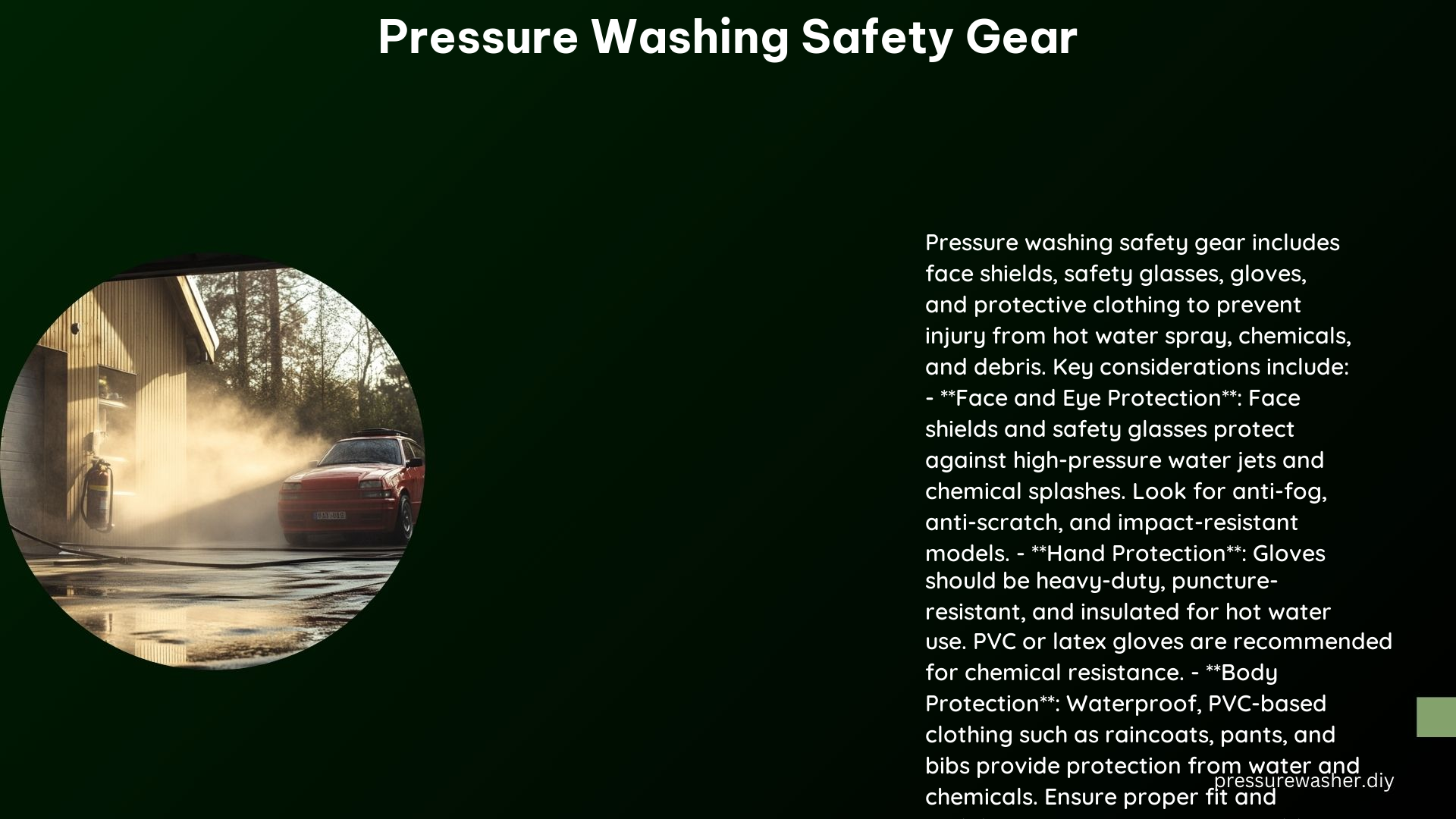Pressure washing is a powerful and efficient way to clean various surfaces, but it also comes with inherent risks. Proper safety gear is crucial to protect individuals from the hazards associated with high-pressure water, chemicals, and debris. This comprehensive guide delves into the essential safety gear, technical specifications, and maintenance practices to ensure a safe and successful pressure washing experience.
Essential Safety Gear
Gloves
Protecting your hands is paramount when pressure washing. Chemical-resistant gloves are a must-have to shield your hands from harsh cleaning agents and scalding hot water. Look for heavy-duty, puncture-resistant gloves that offer a comfortable and dexterous fit, allowing you to maintain a secure grip on the pressure washing equipment. Nitrile or neoprene gloves are excellent choices, providing a balance of protection and flexibility.
Boots
Closed-toe, waterproof boots with a sturdy grip are essential to prevent slips and falls on wet surfaces. Steel-toe boots offer an added layer of protection, safeguarding your feet from the high-pressure streams that can cause serious injuries. Opt for boots with a slip-resistant sole and reinforced ankle support to ensure stability and traction during the pressure washing process.
Safety Glasses and Face Shields
Protecting your eyes and face from debris, chemical splashes, and high-pressure water is crucial. Safety glasses or face shields should be impact-resistant, anti-fog, and scratch-resistant to ensure clear visibility and optimal protection. Look for models that wrap around the sides of your face to provide comprehensive coverage.
Rain Suits and Pants
Waterproof, PVC-based rain suits and pants are designed to keep your body dry and shielded from chemicals during pressure washing. These garments should feature reinforced seams and adjustable cuffs to prevent water entry and maintain a secure fit. The PVC material offers superior durability and resistance to the harsh conditions encountered in pressure washing.
Respirators
When working in areas with airborne contaminants, such as mold or dust, a full-face respirator is necessary. These respirators create a physical barrier and filter to prevent the inhalation of harmful particles, safeguarding your respiratory system. Ensure the respirator is rated for the specific contaminants present in your work environment.
Ear Protection
Pressure washers, especially those powered by gasoline or diesel engines, can generate loud noises that can damage your hearing over time. Wearing earplugs or safety earmuffs can effectively protect your ears from the high-decibel sounds produced by the pressure washing equipment.
Technical Specifications

Materials
PVC (polyvinyl chloride) is a popular choice for pressure washing clothing due to its exceptional strength, suppleness, waterproofing, and durability. This material can withstand the rigors of high-pressure water, chemicals, and abrasion, making it an ideal choice for safety gear.
Water Pressure Resistance
When selecting pressure washing safety gear, it’s crucial to consider the water pressure you’ll be working with. Look for gear that can withstand high water pressures, up to 30,000 psi in some commercial jet washers. This ensures your safety gear can effectively protect you from the powerful streams of water.
Chemical Resistance
Pressure washing often involves the use of harsh cleaning agents, such as chlorine, bleach, and other chemicals. Ensure that your safety gear is resistant to these chemicals, preventing skin irritation, corrosion, or degradation of the materials.
Proper Storage and Maintenance
Clean and Dry Gear
Regularly cleaning and drying your pressure washing safety gear is essential to maintain its effectiveness and longevity. Thoroughly rinse off any chemicals or debris, and allow the gear to air dry completely before storing it.
Store in a Dry Place
Storing your safety gear in a dry, well-ventilated area is crucial to prevent moisture buildup and potential damage. Avoid leaving the gear in damp or humid environments, as this can lead to mold growth, material degradation, and compromised protection.
Inspect Gear Regularly
Regularly inspecting your pressure washing safety gear for signs of wear, damage, or degradation is crucial. Look for cracks, holes, or any other signs of deterioration, and replace the gear as needed to ensure continued protection.
Additional Safety Tips
Use Caution Signs
Placing caution signs around the pressure washing area can help warn others of the ongoing work and prevent accidental injuries. This simple step can enhance the overall safety of the work environment.
Use the Right Hose and Wand
Ensure that the pressure washing hose and wand are suitable for the specific pressure level and water temperature being used. Mismatched equipment can compromise safety and lead to equipment failure or unexpected water pressure surges.
